The United Nations International, Impartial and Independent Mechanism (IIIM) to Assist in the Investigation and Prosecution of Persons Responsible for the Most Serious Crimes Under International Law Committed in the Syrian Arab Republic since March 2011
For such a heavy and loaded topic, the look and feel being developed for the IIM is deliberately clean and simple as it reflects objectivity and clarity. With the client preferring simple, sober designs with a minimal use of white space and in the absence of any design elements suggested in the brand guidelines, much of the work
has been oriented towards creating an inviting aesthetic through the sparing use of colour and through
the basic use of a simple grid.
has been oriented towards creating an inviting aesthetic through the sparing use of colour and through
the basic use of a simple grid.
The spreads below convey the look and feel being developed for IIIM documents. With the majority of documents intended for on screen viewing, certain design inconsistencies present themselves when translated into print. This is particularly the case with the spreads presented on the bottom row where the blue outlines with the rounded corners are open ended towards the top of the page. This occurs because when the document is presented as single pages for on screen viewing, these outlines contain a list that continues from the previous page. When viewed as a spread, the open ended rectangular frame looks odd and doesn't makes as much sense because the design element is not intended for a horizontal alignment of pages. This will be addressed in further iterations of this particular expression of the brand guidelines.
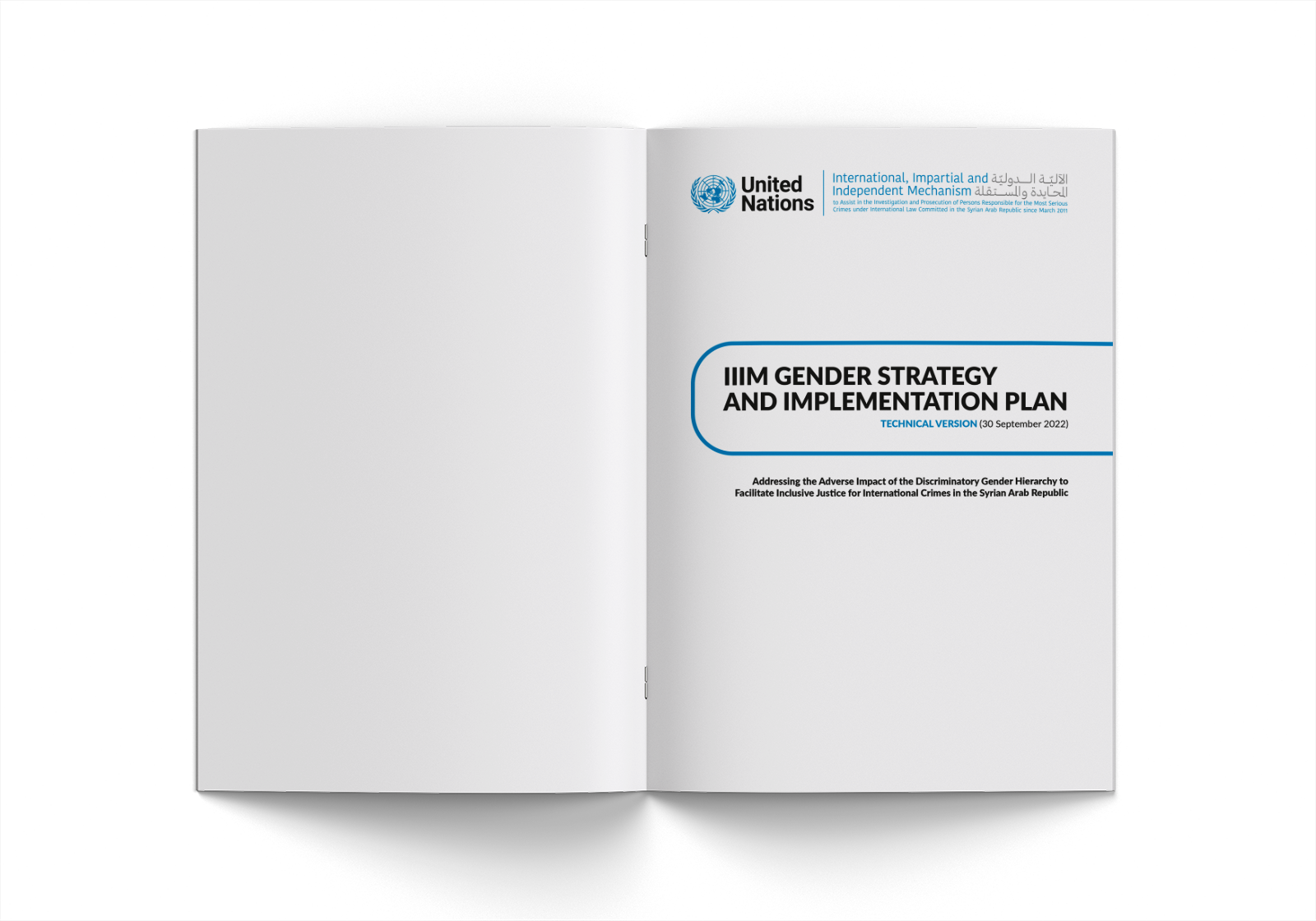
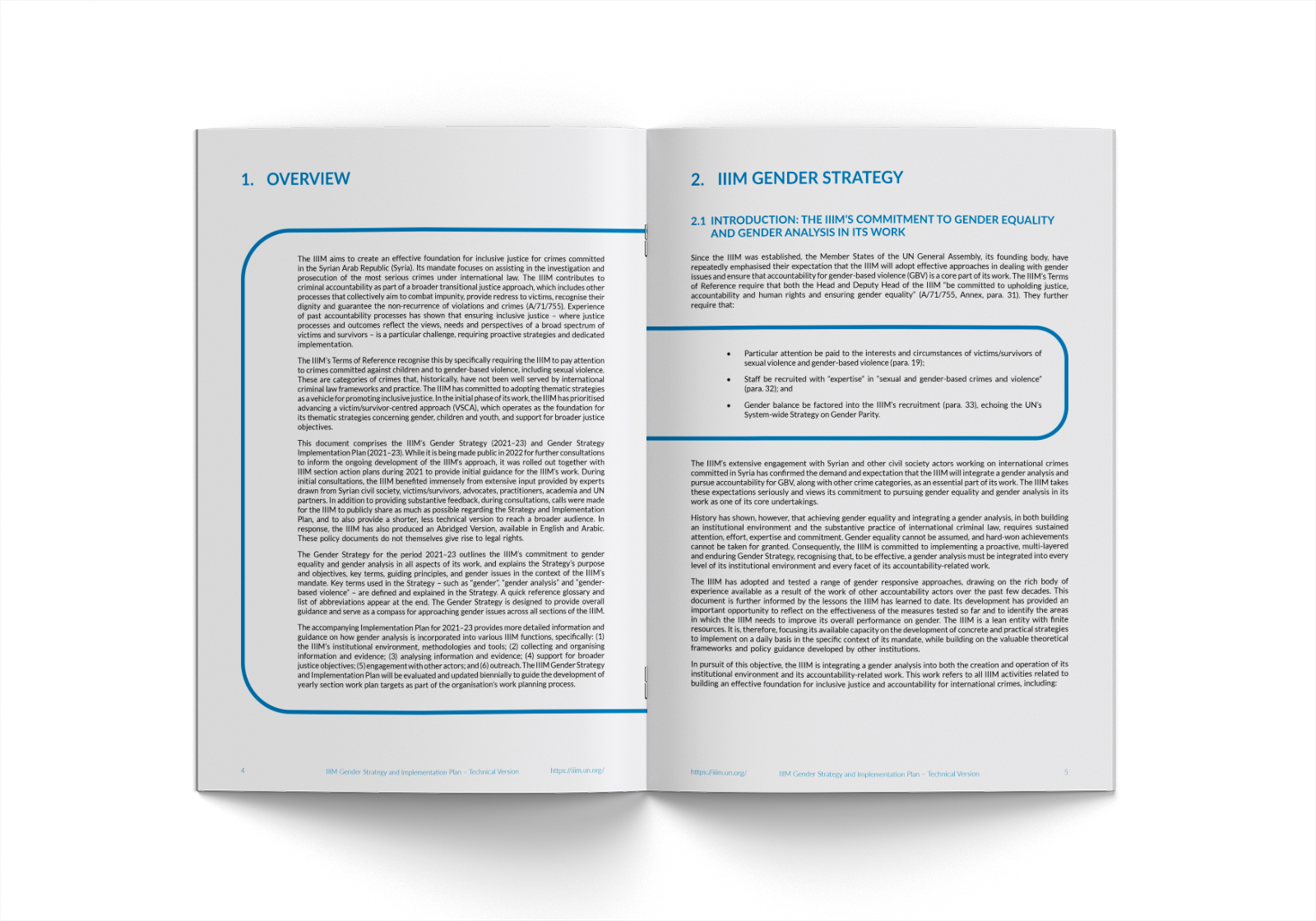
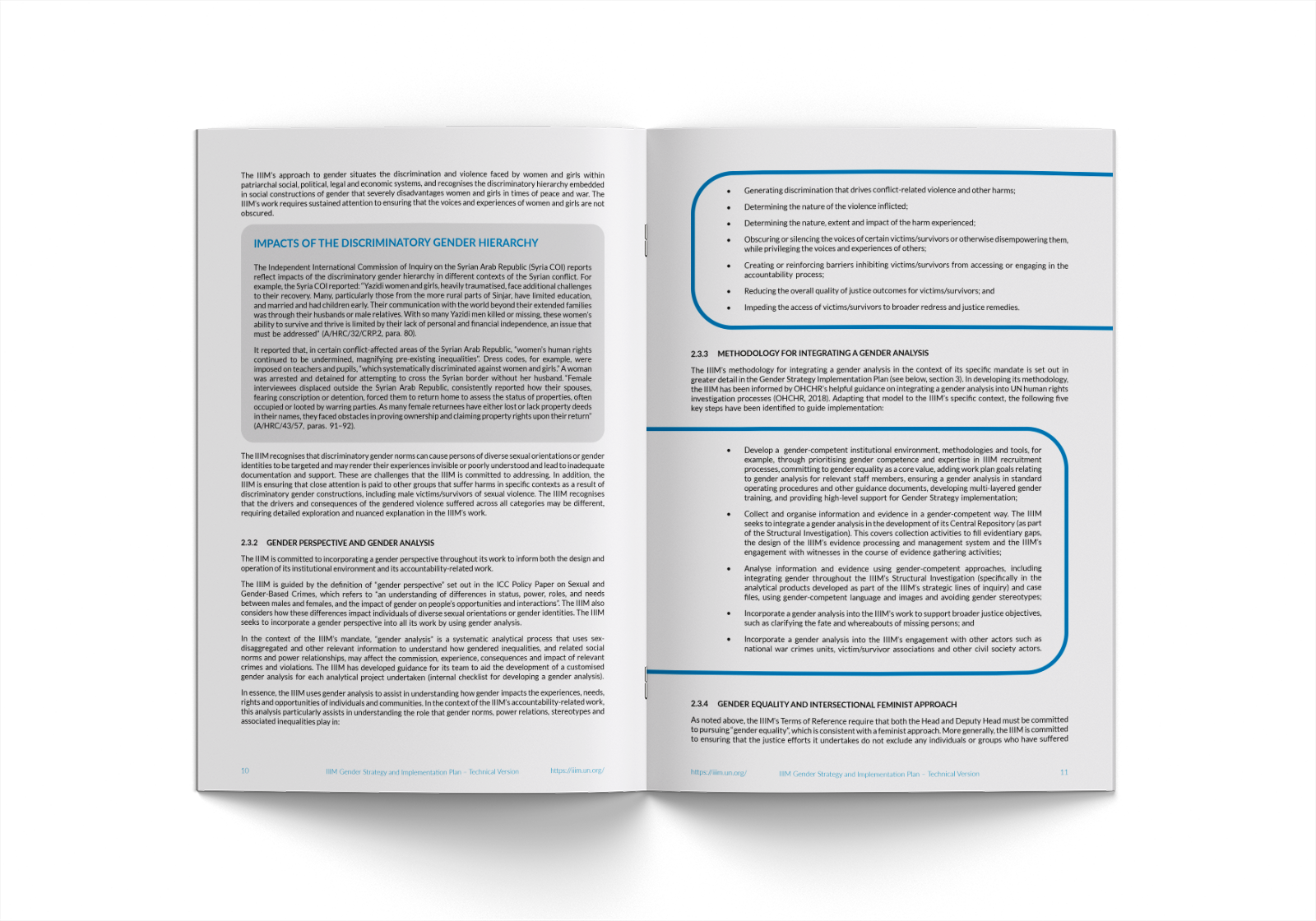
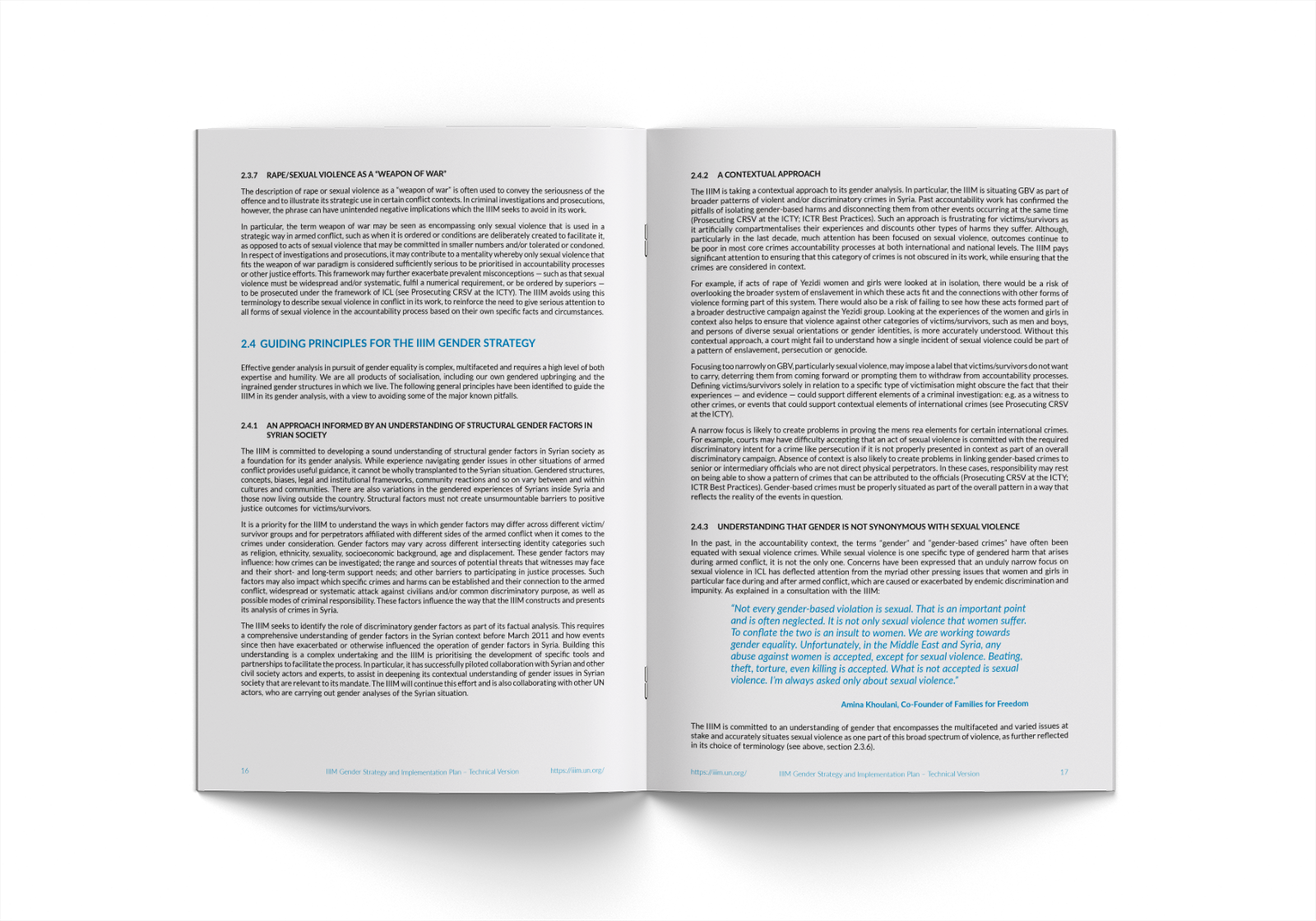
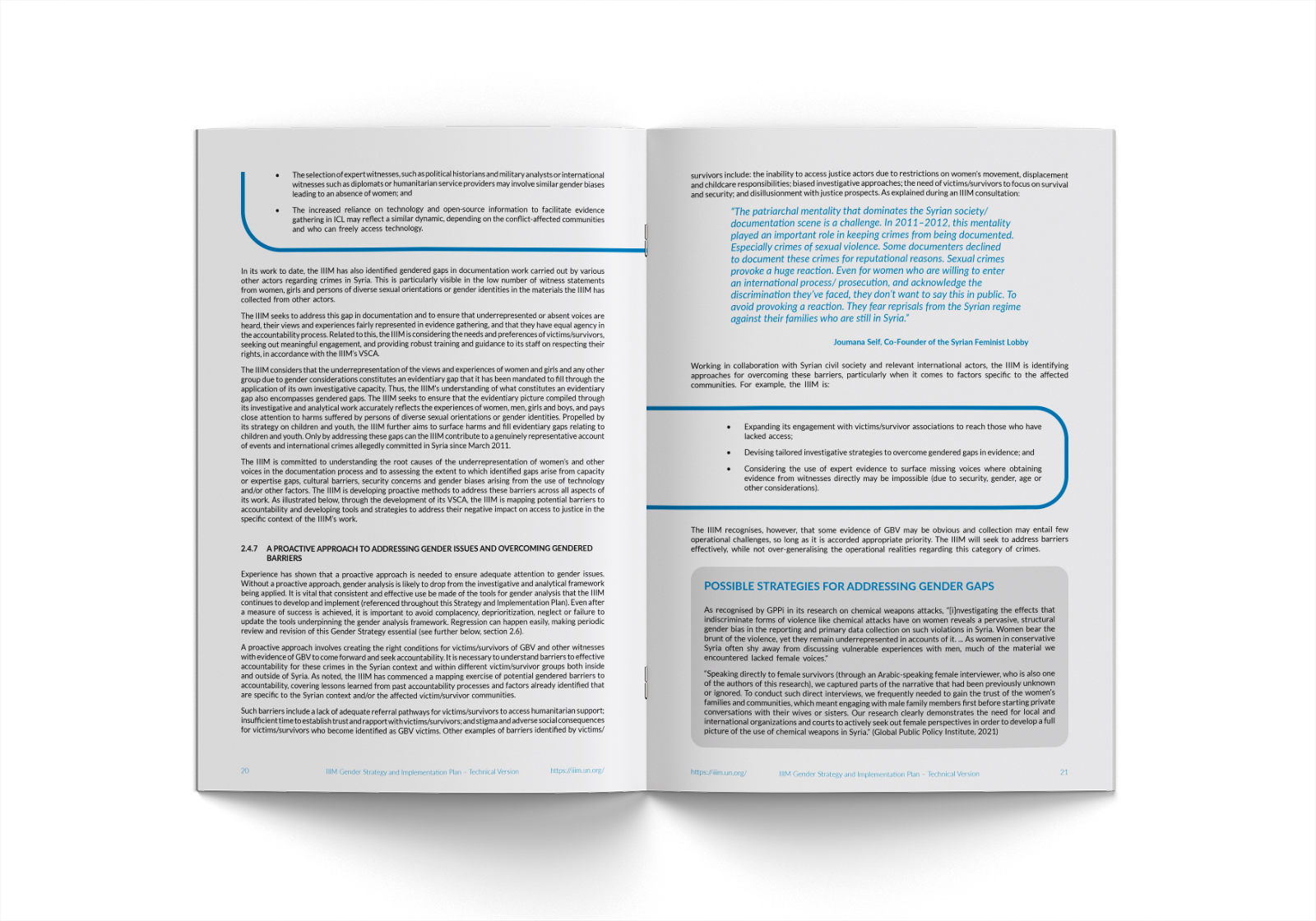
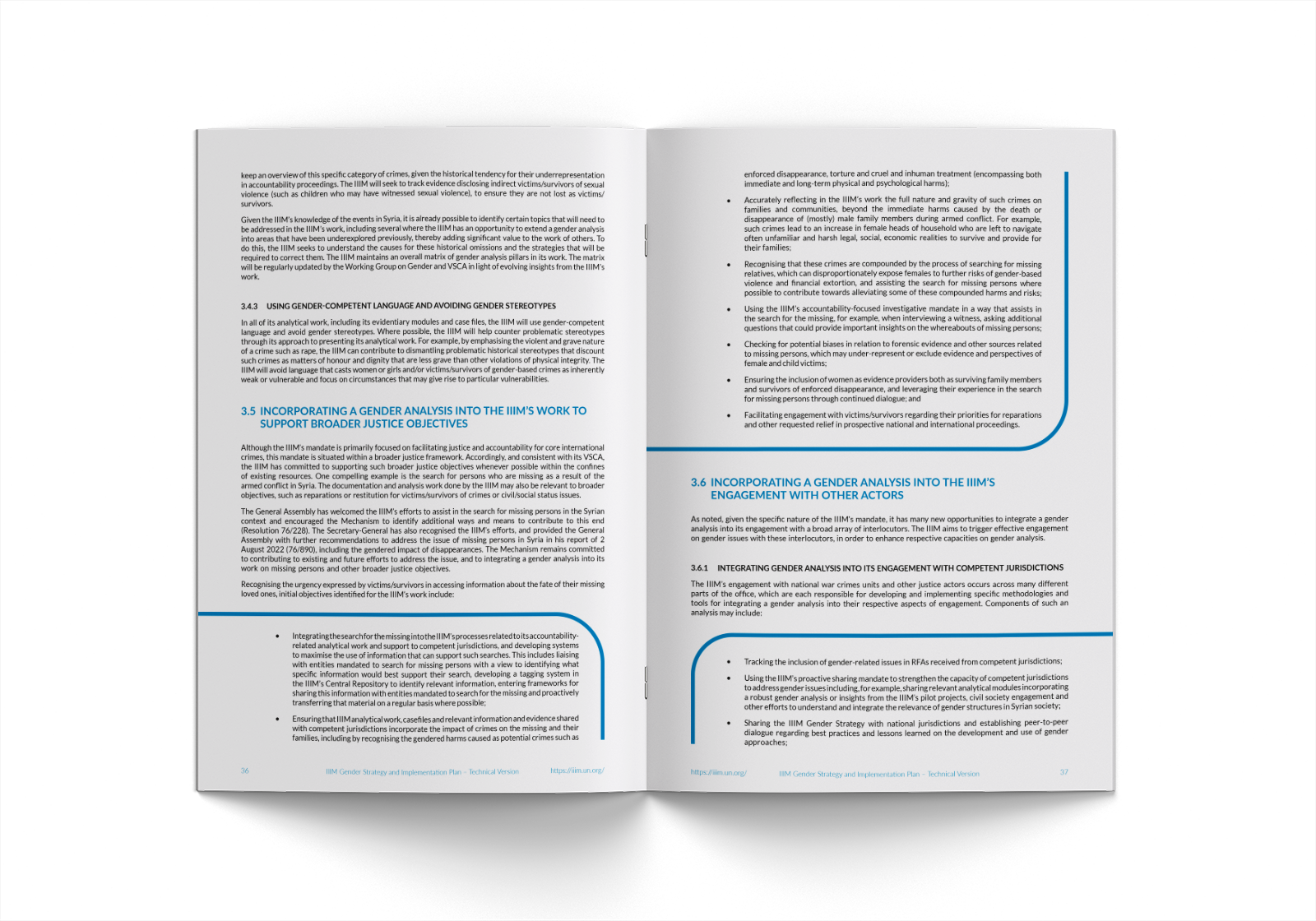
Another expression of the IIIM brand applied to a publication
Infographics
The RFA (Requests for Assistance) Chart
Two approaching to representing the same information structure. An RFA is when an external entity, such as an NGO, reaches out to the IIIM for assistance in an investigation whereas a competent jurisdiction represents an entity that has the authority to exercise jurisdiction over a dispute and interpret and/or enforce laws.
IIIM Structural Investigation Ecosystem Chart
By definition, a structural investigation looks at the overall picture of the context of the crime as well as the individuals involved. It maps over- arching crime patterns, the structures of power wielded by the parties to the conflict, relevant actors - particularly those within the structures of power but also other actors, including civilians, who may be operating outside of these structures but, nevertheless, have played a significant role in the commission of crimes - and the broader context within which all of the relevant events took place. This may include the constitutional and legislative frameworks, the geopolitical landscape and the political, economic, social, cultural and religious context.
The chart below represents a visualisation of the IIM's structural investigation methodology.
A look at how the infographics fit into a publication
An infographic mapping convictions and sentences of perpetrators
in different parts of the world
in different parts of the world